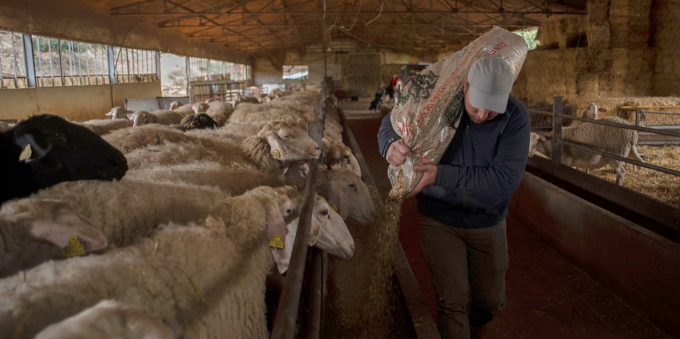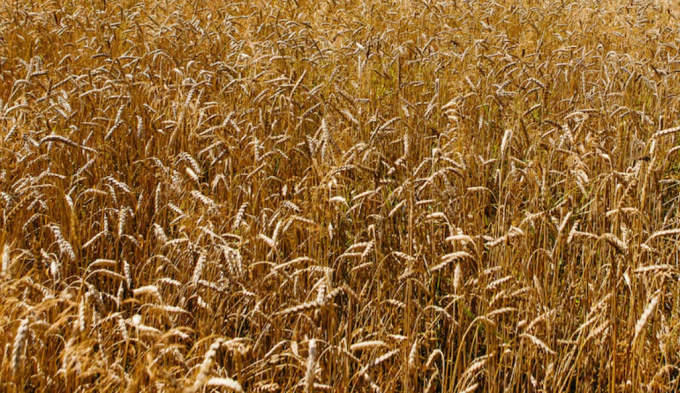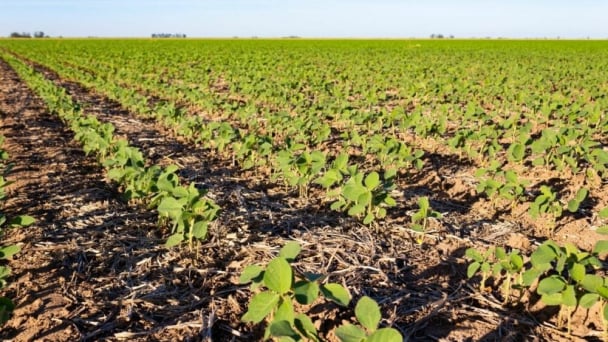May 19, 2025 | 23:36 GMT +7
May 19, 2025 | 23:36 GMT +7
Hotline: 0913.378.918
May 19, 2025 | 23:36 GMT +7
Hotline: 0913.378.918

Spanish shepherd Cristobal Jesus Calle Lopez, 39, feeds wheat to his sheep in Montejaque on March 11. Vladimir Putin's invasion of Ukraine and the resulting sanctions are spilling over to the global economy, inflating costs for key commodities like wheat and fertilizers. Photo: AFP
Jonathan Clibborn should be applying nitrogen on his winter wheat fields right now. He should be taking delivery of seed corn and sunflower, getting his planters ready to roll by the first of April. He should be enjoying spring on his farm near Lviv in western Ukraine with his Ukrainian wife, their three boys, and their dog.
Instead, Clibborn, an Irish immigrant, is doing what nearly every other Ukrainian farmer is these days: He’s checking on relatives in the war zone, sheltering families fleeing the bombs, and struggling just to keep his farm afloat. If they don’t succeed, experts warn, not only will many Ukrainians go hungry, but so will hundreds of millions around the world, perhaps triggering the greatest food crisis since World War II.
Ukraine and Russia together produce nearly 30 percent of the world’s traded wheat and 12 percent of its calories. Without them, soaring food prices and shortages could touch off a wave of instability the world hasn’t seen since the Arab Spring of 2012. The war has all but shut down grain exports from both countries. And since the two nations (along with Russia’s sanctioned ally Belarus) also supply vast amounts of fertilizer, Vladimir Putin’s invasion of Ukraine could affect every farmer on earth this year, and into the foreseeable future.
Still, Clibborn considers himself lucky. He moved to Ukraine 15 years ago with just the shirt on his back, and now farms 3,000 hectares (7,500 acres) in the relatively unscathed region west of Lviv, near the Polish border.
“Some people can’t fertilize their crop because the Russians are shooting everything that moves,” a weary Clibborn says in an Irish lilt. “There are reports of them mining the fields, the roads to the fields, not to mention a lot of unexploded ordinance and bodies in the fields. I think [wheat] yields will be on the floor—maybe a third or a quarter of what they’d normally be.”
With the conflict dragging on and the start of planting season just a week away, the agricultural time bomb is ticking ever louder. Some 26 countries around the world get more than half of their wheat from Russia and Ukraine, says Arif Husain, chief economist at the UN World Food Programme.
“If this war doesn’t get sorted out in the next couple of weeks, things will get even worse,” Husain says. “That means Ukraine will not be able to plant corn. The winter wheat in the ground will not be fertilized, and the harvest sharply reduced. That’s a real danger. They are a country of 40 million people, but they produce food for 400 million. That’s the reality of a globalized world. We are all in this together.”
A locked-up breadbasket

Wheat grows in a field near Uzhhorod, Zakarpattia Region, western Ukraine. Photo: AFP
Over the past decade, Ukraine, long known as the breadbasket of Europe, has become an agricultural powerhouse for much of the developing world. Better seeds, new equipment, and better agronomy—combined with massive investment, by companies like Cargill, Bunge, and Glencore, in grain-handling infrastructure and oilseed crush plants in Black Sea ports—have more than doubled Ukraine’s exports since 2012. It’s now among the top five exporters of several important grains and oilseeds, ranging from 10 percent of the world’s wheat exports to nearly half of the sunflower oil.
As the war progresses, Russia is blockading the ports and destroying port cities; a Russian missile hit a Cargill-chartered ship in the first week of the invasion. Russian exports are hindered by banking restrictions and astronomical wartime insurance premiums on grain ships. As a result, wheat, corn, and soy prices already are soaring past those of the last global food price crises of 2012 and 2008, with wheat jumping 60 percent since the beginning of February.
The earlier crises sparked international food riots, toppled governments in Madagascar and Haiti, and ignited the Arab Spring uprisings in the Middle East. The world is even more volatile today, says Husain, whose agency last year fed 128 million people—the most in its 60-year history.
“In 2008 we didn’t have COVID,” he says. “We didn’t have war in Yemen or Syria or in Ethiopia or northeast Nigeria. Because of COVID, governments are tapped out; debt levels are as high as they have ever been in many poor countries. Inflation is at record levels. Even before Ukraine was invaded food prices were at 10-year highs and fuel prices were at seven-year highs. You add job losses and income losses combined with high prices, people are getting squeezed from both sides. This crisis couldn’t have come at a worse time.”
The WFP is planning to feed a record 140 million people this year, including more than three million displaced Ukrainians, as well as some 44 million others in 28 countries teetering on the brink of famine. Many of those nations depend on grain imports from Ukraine. These include Yemen, Afghanistan, Syria, Ethiopia, and nearly a dozen other countries in the Middle East and Africa.
To make matters worse, WFP’s costs spiked after the invasion, rising by $71 million per month and creating a $10 billion shortfall for the coming year. It’s forced them to begin rationing food supplies to the people who need it most.
A bigger threat looms
Currently some 13.5 million tons of wheat and 16 million tons of corn from last year’s harvest in Ukraine and Russia are stuck because of the war and sanctions. Some of that shortfall could be made up with higher exports from Australia or India, both of which had bumper wheat crops last year. But it’s the fate of this year’s crop in Ukraine that has economists worried.
“We’re not just losing six million tons of grain,” from last year’s harvest in Ukraine, says David Laborde, a senior analyst at the International Food Policy Research Institute in Washington, D.C., “but potentially 60 million tons. Losing the next harvest will be a critical short that no one will be able to make up.”
And that’s not even the biggest potential problem, he says. Ukraine, Russia, and Belarus also export vast quantities of nitrogen and potassium fertilizers around the globe.
“The biggest threat the food system is facing is the disruption of the fertilizer trade,” Laborde says. “Wheat will impact a few countries. The fertilizer issue can impact every farmer everywhere in the world, and cause declines in the production of all food, not just wheat.”
The fertilizer market was already in turmoil prior to Russia’s invasion of Ukraine. Belarus potash exports were under sanctions after that country’s government forced a Ryanair flight to land last year and arrested a dissident onboard. COVID-19 disrupted global shipping and supply chains. Last year Hurricane Ida knocked out two large fertilizer plants along the Gulf Coast of the United States that have struggled to return to production capacity, while fire destroyed a plant in North Carolina. Many European makers reduced production of nitrogen fertilizers after the price of natural gas—a major ingredient—skyrocketed last year. European, South American, and African countries are heavily dependent on imported fertilizers from the Black Sea region.
Adding to the situation, global stockpiles of wheat, corn, and soybeans are at their lowest in more than a decade, says Laborde, while export bans that caused such massive market disruptions in 2008 are starting to crop back up. Already last autumn Russia banned exports of fertilizer; China, another major exporter, has too. In 2021 China went on a major grain- and soy-buying spree to rebuild its own stocks, as well as its pork industry, which lost an estimated 100 million pigs to an outbreak of African swine flu. Earlier this year, China announced it was anticipating its worst wheat crop in history, and independent experts have confirmed its poor condition. China is expected to import more grains this year as well, just to meet demand, says Arnaud Petit, executive director of the International Grains Council, which monitors grain trade around the globe.
“The grain market is tighter than in 2008 or 2013,” Petit says. Because of the high demand from growing populations and changing diets, “we are not expecting any rebuilding of stocks over the next five years. So any climate shocks or conflict will have an impact.”
All of which makes a good harvest in the rest of the world all the more important.
“What we can’t afford now is a major drought in Kazakhstan, Europe, or Argentina,” says IFPRI’s Laborde. “Markets will explode. I don’t want to paint a bleak picture. If the planet will be generous to us this year, we should be okay. But a bad shock right now could bring us to the verge of a major food crisis.”
More red flags
Jerry Hatfield spent the last 30 years studying such events as director of USDA’s National Laboratory for Agriculture and the Environment in Ames, Iowa. The nation’s pre-eminent agricultural climatologist, now retired, is seeing red flags in several parts of the world.
“If we get a climate shock in one of the world’s breadbaskets this year it will be catastrophic,” says Hatfield. “It will make 2008 and 2012 pale by comparison.”
One of those is in Hatfield’s backyard. “All across the Midwest we are on the shoulder of a dry period like we saw in the 1950s, maybe even the 1930s,” Hatfield says. “I’m not saying Dust Bowl yet. But it’s not out of the question.”
“I think we’re in for some real production shocks on a global basis,” he warns. “We have political turmoil, climate turmoil, supply chain issues getting fertilizer and fuel. I mean, what else could go wrong?”
Many U.S. farmers are already feeling the pinch. Justin Bruch spent seven years dealing with supply chain issues as a corporate farmer in Ukraine, managing up to 60,000 hectares (148,000 acres) before coming back home in 2014 after Russia invaded Crimea and the Donbas regions. He now heads an agricultural venture capital firm in Omaha, Nebraska, while helping his brother run the family farm near Emmetsburg, Iowa.
The price of nitrogen fertilizer has more than doubled, Bruch says. Farming friends in Brazil tell him they’re afraid they won’t get the fertilizer they need. One of his friends in Iowa, afraid of running out of diesel, purchased a tanker truck so he could take delivery of all his fuel for the year. Bruch himself can’t locate a center-pivot wheel anywhere—a critical spare part during the irrigation season. More alarmingly, he says, soil moisture ahead of planting is as low as he’s seen it in a long time.
“A friend of mine dug down five feet the other day to fix an irrigation line,” Bruch says. “He told me it was gunpowder dry all the way down. If we run into a situation where Brazil is short on fertilizer, Ukraine is not producing food, and a U.S. drought, this could get ridiculous.”
History repeating itself?
Still, Bruch’s immediate concern is for his friends still farming in Ukraine. He tried to convince his former agronomist, Vladimir Bubnov, to come to the United States days before the invasion, but the Ukrainian refused. Bubnov now runs Bruch’s former operation near Lviv, and after rescuing family members from the war zone is preparing to plant the farm. He’s in a better position than Jonathan Clibborn; Bubnov emails that they have enough supplies to seed the farm this spring, and as long as the war doesn’t reach them, he says they should be able to harvest their crops. But he’s less optimistic about the farmers further east.
“The land that is under war activities—none of it will be planted in my opinion,” Bubnov writes. “And with current weather situation (knowing that most of the area is south and southeast) very soon it will be too late to plant anyway. All this will decrease total potential export capacity of grain and even if we, as a country, produce a bit less than usual—how will it be shipped? Sea port infrastructures are getting destroyed and railway capacity is not enough for big quantities of grain anyway.”
Still, Bubnov, a proud Ukrainian who grew up near Kyiv, is doing everything he can to grow food for his country, just like Clibborn is doing for his adopted homeland.
Clibborn has been speaking with people in the east of the country. “The Russians are blowing up grain elevators,” he says they tell him. “They are hitting cold storage facilities. There are even reports of them destroying farm equipment. There’s a very targeted approach to what they are doing.”
The situation sounds eerily similar to the Holodomor—the man-made famine orchestrated by Josef Stalin in the early 1930s to crush Ukrainian resistance to farm collectivization. Stalin ordered the Soviet army to strip Ukrainian peasants of whatever food stores they had—even their pets. An estimated 3.9 million people died.
“The parallels are frightening,” says Clibborn. “It’s really hard to comprehend, but that’s what’s happening.” He sent his wife and kids to stay with his family in Ireland, but he worries about his wife’s relatives in villages of eastern Ukraine.
“I completely believe in Ukraine,” Clibborn says. “It’s deplorable what the Russians are doing here, but the defiance and will of the people is just incredible. People say the Ukrainian army is only 200,000 enlisted men. But really it’s an army of 36 million. Everyone who is still here is doing something on some scale to assist in the defense of the country. I’m not a soldier. This is how we help. We get the farm planted so we can feed the people of Ukraine, and after that, the rest of the world.”
Clibborn pauses for a second, and then adds, “You know, Putin has done more for Ukraine than any of our presidents. The veil is off and everyone is united. Western Ukraine never forgot what the Russians did to these people in the Holodomor. The eastern side could have gone either way. But now, no one has any doubt. The country is unified and this will make a nation of it.”
(Nationalgeographic)

(VAN) Fourth most important food crop in peril as Latin America and Caribbean suffer from slow-onset climate disaster.

(VAN) Shifting market dynamics and the noise around new legislation has propelled Trouw Nutrition’s research around early life nutrition in poultry. Today, it continues to be a key area of research.

(VAN) India is concerned about its food security and the livelihoods of its farmers if more US food imports are allowed.

(VAN) FAO's Director-General emphasises the need to work together to transform agrifood systems.

(VAN) Europe is facing its worst outbreak of foot-and-mouth since the start of the century.

(VAN) The central authorities, in early April, released a 10-year plan for rural vitalization.

(VAN) Viterra marked a significant milestone in its carbon measurement program in Argentina, called Ígaris, reaching 1 million soybean hectares measured.